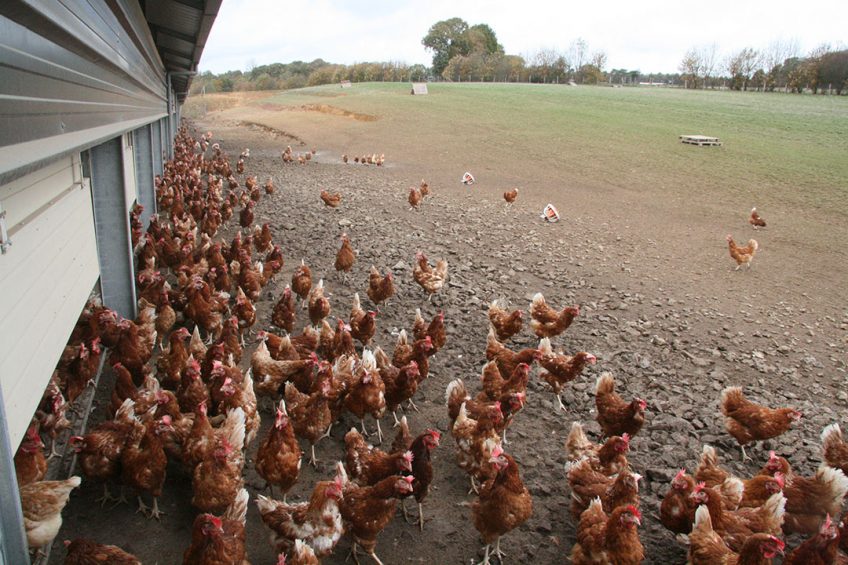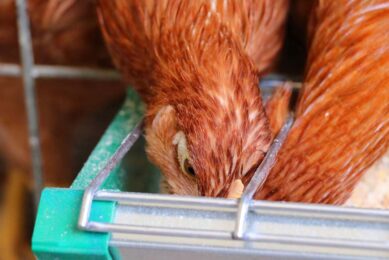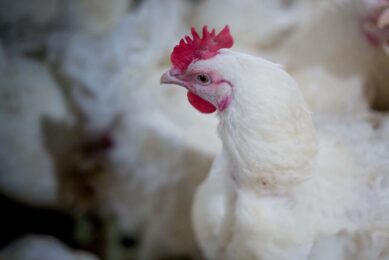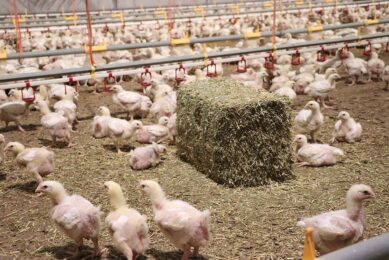Cage and free-range supplement each other

About 60% of laying hens in France are kept in enriched cages. However, the market for cage eggs is shrinking. This made Gwenael Carree want to expand his farm with a free-range poultry barn in 2017. “My cooperation wants these eggs but can only get them if it also buys my cage eggs,” the French poultry farmer smiles.
When Mr Carree took over his father’s 55-hectare poultry and arable farm in 1995, the future looked bright. Of course, the farm needed investments at a later stage, especially its poultry branch. The company had one poultry barn with a traditional cage system for 40,000 birds. This would last Mr Carree until 2012, the year in which the European cage ban took effect. He decided to clear out the existing barn that year and started using it to store manure. He built the new 2-storey poultry barn next to it. “I had only one logical choice at the time, just as all my French colleagues: an enriched cage.”
|
The 8-layer Salmet system, with a floor halfway for inspection rounds, houses 85,000 laying hens. Each cage counts 40 Novogen brown hens. “You can imagine the investment I needed to make for this poultry house,” Mr Carree says. “About € 25 per animal, including egg belts and packaging.”
Certainty and uncertainty
The investment of more than € 2 million was not a problem at the time of the expansion in 2012. Even though Mr Carree does work for an integration, the feed cooperations that also market the eggs favour long-term contracts, in which the egg prices are linked to the development of the feed prices. “This ensures a good margin, if you run things properly, have no technical setbacks or diseases in the flock,” Mr Carree says. The contract offers certainty, which the bank also demands. “I have done 6 rounds in the cage and the contract runs for another 2 years. On the other hand, my funding runs until 2026.”
Mr Carree foresees uncertainty at the very moment his contract is due for renewal. “The enriched cage seemed like the most logical option in 2012, but times have changed. New cage systems are not built any more, and the old ones slowly disappear. The market does not want these eggs any more, or at least, a lot less. 2 years ago, 75% of the French laying hens were kept in a cage. This number has decreased to the current 60%. The market is compelling and that leads to uncertainty.”

Smart entrepreneurship
At the same time, the poultry farmer sees demand for free-range eggs explode. “We do not produce barn eggs from aviary systems in France. These seem to skip our market. Organic eggs are in demand, but the market for those is more or less saturated.” Mr Carree concluded it was best to build a new free-range poultry barn and started construction in 2017. The barn fitted nicely on the lot, next to the existing cage barn. “I have enough hectares for the free range.”
The poultry farmer built a poultry barn for 35,000 free-range chickens in a Big Dutchman aviary system. This took an investment of € 20 per bird, because he could use the existing egg belts and systems. Even before the first spade was put in the ground, the Cecabrons cooperation offered him a contract for as many as 10 consecutive flocks. “I told them immediately that I was very interested, but that I also wanted financial commitment for the production of enriched cage eggs after the end of that contract. In that way, the supply of free-range eggs accompanies the operational certainty of the cage production.”

Different way of working
The first flock in the free-range barn are 59 weeks old now and looks perfect. “It truly is a problem-free flock, unlike the hens in the cage barn. Both are Novogen Brown and both are 59 weeks old. They do however come from 2 different poultry rearing companies and the cage hens were not their best to begin with. Moreover, we stimulated them rather early and the flock suffered from a mycoplasma infection.”
Mr Carree chose to work with one age with both systems. “This makes the comparison easier and being able to compare my cage experience to the free-range chickens gives me peace of mind. Of course, it asks for different management, but that is less difficult than it seems. The hens have access to the free-range, but because of the weather here in Brittany, cold in winter, hot in summer and much wind in between, there are never more than 1,000 or 2,000 hens outside.”
Since Mr Carree built his free-range barn, he did encounter blood lice, but he manages to control those with a mixture of a water additive and silica. “Hygiene between barns is of the utmost importance, we therefore use separate clothes, shoes and materials in each barn.”
 Beheer
Beheer
 Profile
Profile







 WP Admin
WP Admin  Bewerk bericht
Bewerk bericht